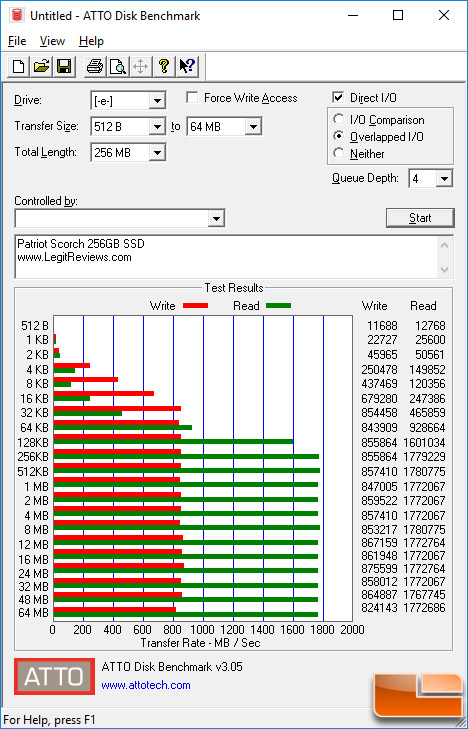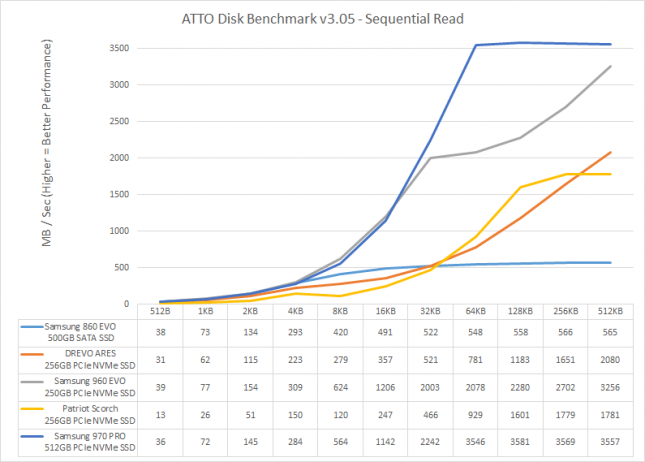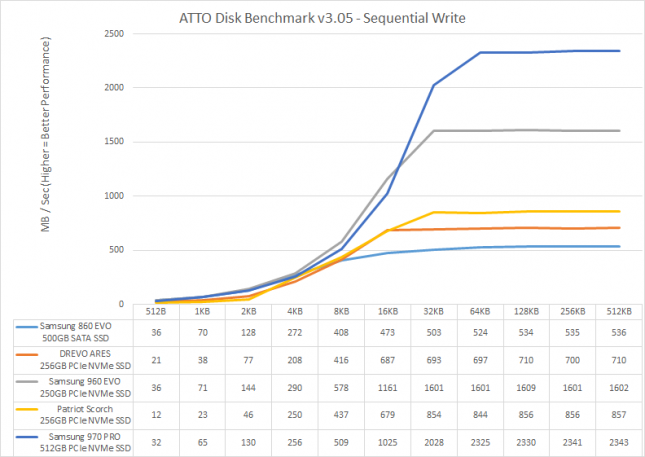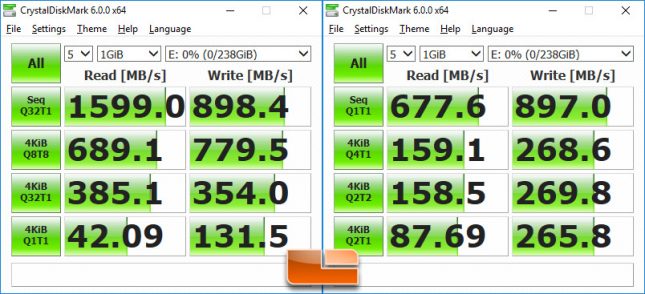Patriot Scorch 256GB M.2 NVMe SSD Review
ATTO & CrystalDiskMark
ATTO v3.05
ATTO is one of the oldest drive benchmarks still being used today and is still very relevant in the SSD world. ATTO measures transfers across a specific volume length. It measures raw transfer rates for both reads and writes and places the data into graphs that can be very easily interpreted. The test was run with the default runs of 0.5KB through 64MB transfer sizes with the total length being 256MB.
ATTO – Patriot Scorch M.2 256GB:
Benchmark Results: ATTO showed the Patriot Scorch 512GB M.2 PCIe NVMe drive reaching speeds of up to 1781MB/s read and 876 MB/s write in the standard overlapped I/O benchmark. This drive is rated at up to 1700 MB/s max sequential read and 780 MB/s max sequential write, so we are getting well over those speeds.
Benchmark Results: Compared to some other SATA III and PCIe NVMe SSDs, the Patriot Scorch 512GB drive started out a little slow, but by around the 64KB file size the transfer speeds were able to pass the Samsung SSD 860 EVO SATA III drive and was competitive with the DREVO ARES 256GB drive.
Benchmark Results: The Patriot Scorch 256GB drives write speeds at QD4 look pretty good compared to the other drives.
CrystalDiskMark 6.0.0 x64
CrystalDiskMark is a small benchmark utility for drives and enables rapid measurement of sequential and random read/write speeds. Note that CDM only supports Native Command Queuing (NCQ) with a queue depth of 32 (as noted) and shows the highest score of five runs.
CystalDiskmark – Patriot Scorch 256GB:
Benchmark Results: The HP SSD EX920 M.2 1TB drive topped out at 1599 MB/s read and 898 MB/s write in the standard sequential write test that is done at QD32. Random 4K QD1 performance was 42 MB/s read and 132 MB/s write. Those 4K random performance numbers improved up to 88 MB/s read and 2266 MB/s write at a queue depth of 2. We also ran Random 4K numbers are a queue depth of 2 with two threads and then again at 4 with one worker for those that would like to see more data from the most important queue depth levels.
Let’s look at some other benchmarks!




